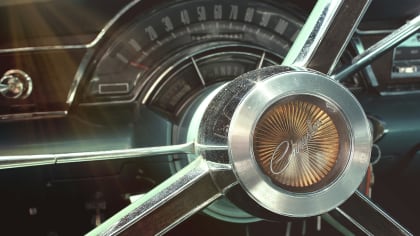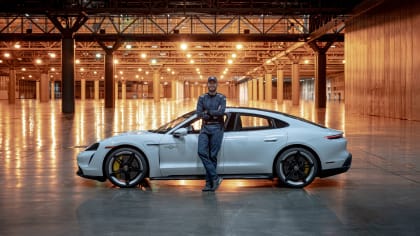Traveling through the past and present of the Green Book

There’s the movie, the book, and then there’s the local backstory: For 30 years, Victor Green helped travelers navigate their way through a segregated America—including a segregated Los Angeles.
By Roy Nakano
Thu, Dec 13, 2018 07:53 AM PST
Feature image: The 1940, 1956, and 1963-64 facsimile editions of the Green Book, published by Victor Hugo Green (Nakano)
As we go to press, the movie Green Book is being celebrated. It’s the story about African American pianist “Doc” Don Shirley and his travels through the Deep South in the 1960s with his Italian American driver-bodyguard, Frank “Tony Lip” Vallelonga. It’s was chosen by the National Board of Review as the best motion picture of the year, and it just won a Golden Globe for Best Motion Picture, Musical or Comedy.
Despite the movie’s title, the book is just a conduit for the story. Doc Shirley and Tony use the Green Book to guide them to racially friendly taverns, restaurants and hotels. The movie tells a compelling story, but the story behind the book begs to be better known.
Victor Hugo Green and the Green Book
In 1936, U.S. postal carrier Victor Hugo Green from Harlem, New York, first published The Negro Motorist Green-Book—a guide to hotels, restaurants, and other entities in cities across the country that accepted business from African American tourists. For 30 years, the Green Book was a vital source for safe and sane travel through a segregated America.

The impact of the automobile on 20th century America is pretty well-documented: Originally seen as toys for the rich, cars became affordable to the middle class, providing families with the freedom to travel beyond the confines of train stops and destinations within walking distance. For the growing African American middle class, cars offered the kind of freedom not replicated in the housing or job markets. But that freedom was still limited by racial segregation, discrimination and hostility.
Enter the Green Book: It provided a state-by-state listing of barber shops, beauty parlors, drug stores garages, hotels, night clubs, restaurants, service stations, taverns, tourist homes, and other businesses that welcomed the African American motorist clientele.
During the height of segregation, you could pick up a Green Book at an Esso gas station. Not only did Esso serve African Americans, it was one of the few oil companies at the time that offered gas station franchises to African Americans during this era.
Although racial discrimination was far from over, the final edition of the Green Book was published two years after the passage of the Civil Rights Act of 1964.

The new Green Books
A half a century later, replica editions of the Green Book are now available. The first one was issued in November of 2016, and is titled The Negro Motorist Green-Book, a 1940 facsimile edition. Eight more have followed, with two of the most recent being published in November of 2018. In addition to the initial motorist edition, there are traveler editions, an international edition, an addition for travel and vacations. Size-wise, they range from 52 pages for the 1940 edition, to 132 pages for the 1962 Edition Green Book Guide for Travel and Vacations. Given all the buzz surrounding the movie, don’t be surprised if more are issued.
The facsimile editions are published by About Comics, which was founded by writer-editor Nat Gertler. Gertler describes About Comics as “neither a mainstream comics publisher, nor an alternative comics publisher.” Its website carries the slogan: “Publishing things that ought to be published.” Any of the editions can be had for around $8 through Amazon.com, and are a worthy way to capture an important part of American history.
Navigating Los Angeles with the Green Book
Reading the Green Book—particularly the earlier editions—makes for a fascinating education about the history of racial discrimination in one’s own city. It wasn’t only for traveling through the Deep South. There’s a section for the Los Angeles area. And sadly, the number of recommended businesses are few and far between for our southland. Here’s a sampling of what was listed for the Los Angeles area:
Kentucky Tavern
Listed as the only tavern known in the Pasadena, California area to allow African American patrons in the Green Book’s 1940 Edition. The tavern no longer exists, but there is some poetic karma at play. At the North Fair Oaks location now stands Robinson Park, named after two of Pasadena’s famous sports figures and early residents, the brothers Jackie and Mack Robinson.

Clifton’s
Once the oldest surviving cafeteria style eatery in Los Angeles, the business is said to have maintained a policy during the Great Depression of never turning anyone away, even if they had no money. According to the Green Book, Clifton’s also maintained a policy of no racial discrimination. Earlier this year, the cafeteria closed. However, the current owner says a marketplace will return in early 2019, with classic Clifton’s dishes along with some internationally inspired choices.
Biltmore Hotel
The luxury Los Angeles Biltmore Hotel may be the most upscale business in the Southland to grace the pages of the Green Book. It’s not listed in the early editions, but the latter ones, like the Travelers’ Green Book International Edition 1963-64 has it prominently displayed. It’s now known as the Millennium Biltmore Hotel, after it was purchased by Millennium & Copthrone Hotels in 1999.
The hotels on Central Avenue
Many of the hotels that flanked Central Avenue have long been listed in the Green Book, including the Allen, Clark, Dunbar, Elite, Kentucky, Olympic and Sheridan. Many of these were African American-owned. Central Avenue, and in particular, the Dunbar Hotel, was once the center of Los Angeles’ jazz scene, hosting the likes of Billy Holiday, Count Basie, Duke Ellington, Louis Armstrong, and countless other musical legends.

Victor Green has the last laugh
As Victor Green put it in his 1954 Edition, “The white traveler for years has had no difficulty in getting accommodations, but with the Negro it has been different…These guides have made traveling more popular and without running into embarrassing situations.”
Green vowed to keep printing the guide until the laws of the USA would make it needed no longer. In the Introduction to his 1949 Edition, Green wrote: “There will be a day sometime in the near future when this guide will not have to be published. That is when we as a race will have equal opportunities and privileges in the United States. It will be a great day for us to suspend this publication for then we can go wherever we please, and without embarrassment. But until that time comes we shall continue to publish this information for your convenience each year.”
It looks like Victor Green has the last laugh: 50 years after the last issue was published, it’s being published again—both in print and in the form of a critically acclaimed movie. This time, it’s so we don’t forget why the original was needed. – Roy Nakano
You can find the facsimile editions of the Green Book below on Amazon.com.

Seas Cafeteria. Courtesy of the
Los Angeles Public Library
Photograph Collection.
The Negro Motorist Green-Book
1940 Facsimile Edition
Paperback: 52 pages
Publisher: About Comics (November 27, 2016)
ISBN-10: 1936404672
ISBN-13: 978-1936404674
Product Dimensions: 5 x 0.1 x 6.8 inches
The Negro Travelers’ Green Book
1954 Facsimile Edition
Paperback: 88 pages
Publisher: About Comics (January 3, 2017)
ISBN-10: 1936404664
ISBN-13: 978-1936404667
Product Dimensions: 5 x 0.2 x 6.5 inches
Travelers’ Green Book
1963-1964 International Edition (facsimile)
Paperback: 108 pages
Publisher: About Comics (April 10, 2017)
ISBN-10: 1936404702
ISBN-13: 978-1936404704
Product Dimensions: 5 x 0.3 x 6.8 inches
The Negro Motorist Green Book
1947 Facsimile Edition
Paperback: 84 pages
Publisher: About Comics (November 19, 2017)
ISBN-10: 1936404745
ISBN-13: 978-1936404742
Product Dimensions: 5 x 0.2 x 6.8 inches
1962 Edition Green Book Guide for Travel and Vacations
1962 Facsimile Edition
Paperback: 132 pages
Publisher: About Comics (February 8, 2018)
ISBN-10: 1936404753
ISBN-13: 978-1936404759
Product Dimensions: 5 x 0.3 x 6.8 inches
The Negro Travelers’ Green Book
1957 Facsimile Edition
Paperback: 88 pages
Publisher: About Comics (June 30, 2018)
ISBN-10: 1936404877
ISBN-13: 978-1936404872
Product Dimensions: 5 x 0.2 x 6.8 inches
The Negro Motorist Green Book: An International Travel Guide
1949 Facsimile Edition
Paperback: 87 Pages
Publisher: About Comics (November 12, 2018)
ISBN-10: 1949996026
ISBN-13: 978-1949996029
Product Dimensions: 5 x 0.2 x 6.8 inches
The Negro Travelers’ Green Book
1959 Facsimile Edition
Paperback: 91 Pages
Publisher: About Comics (November 21, 2018)
ISBN-10: 1949996034
ISBN-13: 978-1949996036
Product Dimensions: 5 x 0.2 x 6.8 inches
About The Author

Roy Nakano gave birth to LACar in the late '90s, having previously delivered LA Audio File back in the '80s. Aside from the occasional review, Roy likes to stray off the beaten automotive path: "Six Degrees of Reparations" reflected on the regretful ethical paths taken by car companies throughout history. "Traveling Through the Past and Present of the Green Book" looked at businesses that took a stand against racism and the man that wrote the book on where to find them. "Best Cars to Drive in Rush Hour Traffic" was an LACar guide published in the pre-GPS era. "In Search of the First Datsun 510 Tuner" looked at one of the milestones in the origin of import tuners.






